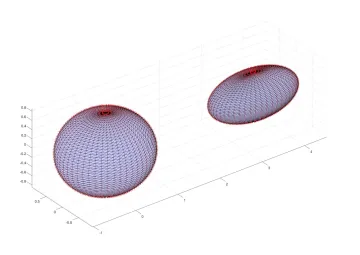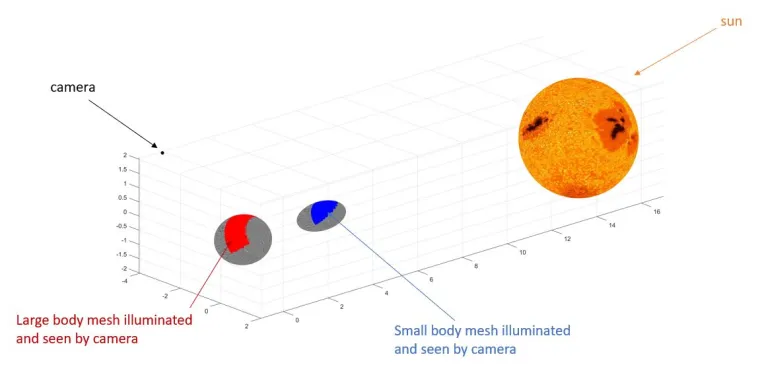Binary Asteroid Systems
Shape Models and Lightcurves of Binary Asteroid Systems
Mario De Florio, Enrico Schiassi, Roberto Furfaro
Knowing the formation location of Jovian Trojan (hereafter, Trojan) and Hilda asteroids has consequences on how the giant planets must have migrated early in solar system history. Bulk density, which can be inferred from binary asteroid systems, can be used to estimate formation location. However, few binaries are known for Trojans and none have yet been identified for Hildas, rendering hardly any observational evidence as to their dynamical origin. To identify more Trojan and Hilda binary systems for density and origin estimates, we are observing the rotational lightcurves of binary candidates in these two populations. As a consequence of our observing strategy, we are also occasionally able to fit H and G parameters to our data, giving further information about their surfaces.

We developed a tool for simulation of Binary Asteroid Systems, according to the following scheme.
To model the shape of a binary-system, the Roche binary approximation is used. Each asteroid is considered to be a Roche ellipsoid and their shapes are computed separately using reciprocal values, 𝑞q, and 1/𝑞1/q, for the mass ratio, and under the hypothesis of equal density. The semi-axis, mass ratio, and orbital frequency are computed by solving a Chandrasekhar equation (S. Chandrasekhar, The equilibrium and the stability of the Roche ellipsoids, 1963).
Once the parameters for each Binary Asteroid Systems are computed, the ellipsoids with triangular mesh are built.
Light Source (Sun) and camera (Earth telescope) are created and placed in the space. Algorithms are developed to detect the ellipsoids triangular mesh illuminated by the light source and seen by the camera concurrently (Shadow modelling of the primary on the secondary, and vice versa).

The Optical Lightcurves are obtained according two scattering models: Minnaert (a generalization of the Lambertian model) and the Lommel-Seeliger. For each scattering model the following quantities are calculated:
•Bidirectional Reflectance;
•Bidirectional Reflectance Distribution Function;
•Radiance Factor;
•Radiance Coefficient;
•Directional-Hemispherical Reflectance;
•Photometric Function;
The Thermal Lightcurves are obtained according the Near-Earth Asteroid Thermal Model (NEATM) emission model. The observable flux at a given wavelength is computed.
Joint Meeting
Sonnett, S., Grav, T., Williamson, B., Witry, J., Reddy, V., Furfaro, R., De Florio, M., Schiassi, E., Chatelain, J., Lejoly, C., Le Corre, L., Györgyey Ries, J., Kramer, E., Mainzer, A., Gritsevich, M., Masiero, J., and Bauer, J., 2019. Lightcurves, Shape Models, and HG Parameters of Trojan and Hilda Binary Candidates. EPSC, 2019, pp.EPSC-DPS2019. PDF

